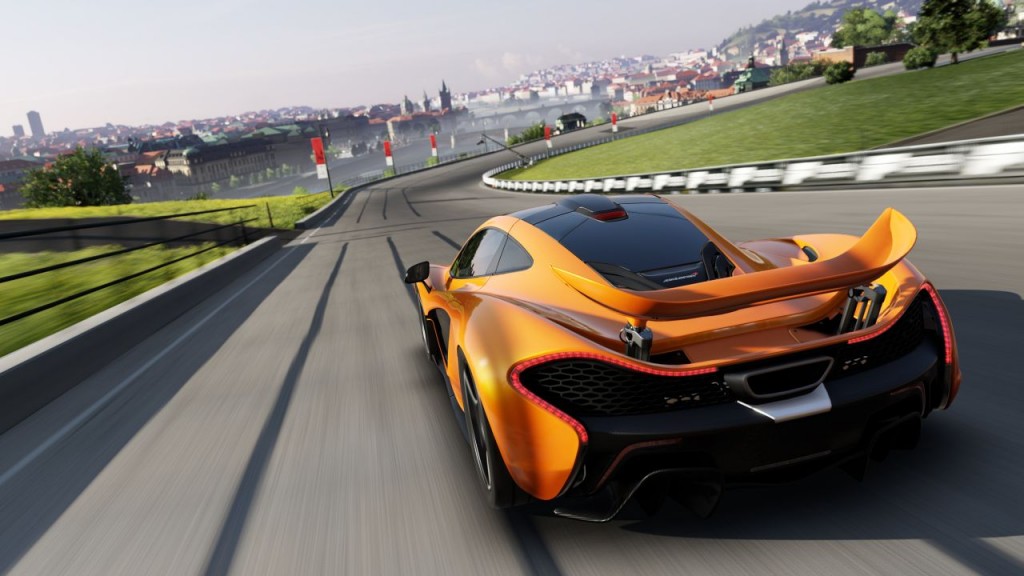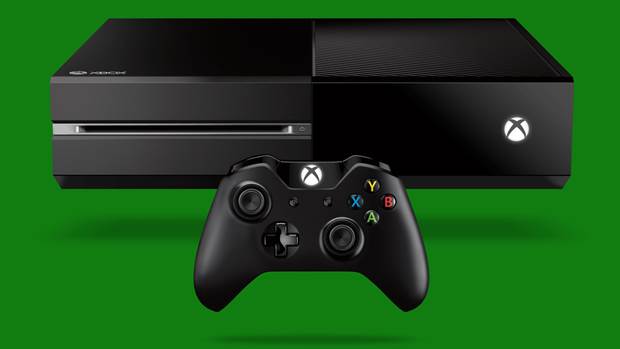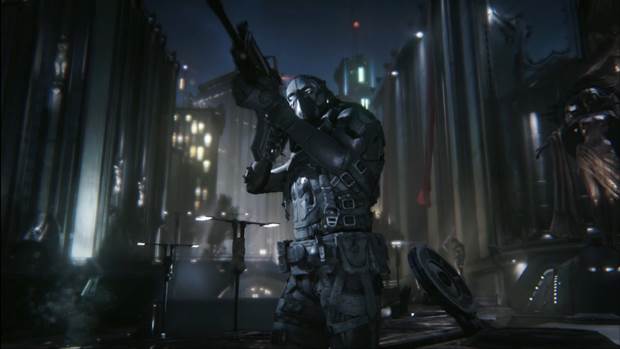
The next generation of gaming is going to be huge. Whether it’s on PC, PS4 or Xbox One – heck, even for the Wii U – there is no denying the utter range and diversity of the platforms on display. However, they all have one thing in common: Each one of them is influenced by Advanced Micro Devices or AMD. The Big Three of this console generation all have AMD GPUs and CPUs, and games like Battlefield 4 are optimized to work best on AMD systems. That’s not taking into account the strides made in the smartphone market.
We recently spoke to various individuals over at AMD – with answers compiled by Robert Hallock, PR Lead for Gaming and Enthusiast Graphics – about the PlayStation 4 and Xbox One, including the company’s role in designing the consoles, and on what the future holds for PC gaming as well what the company is doing to innovate in graphics.
Rashid Sayed: Next generation seems to be firmly in AMD’s grasp, since all the three platform holders–Sony, Microsoft and Nintendo–are using AMD tech. What benefits will this bring to the company as a whole in, say, the next 5-6 years?
"Coming into this latest generation, our flagship Graphics Core Next architecture is the common fabric for any game developer looking to publish. "
Robert Hallock: It’s tremendously difficult to predict where things will go in 5-6 years, but we can talk about the near-term with more confidence: the game development industry now uses AMD Radeon graphics for six shipping platforms: Nintendo Wii, Nintendo Wii U, Sony PlayStation 4, Microsoft Xbox 360, Microsoft Xbox One and the PC.
For five of those six platforms, Radeon is the only choice in the development process. And coming into this latest generation, our flagship Graphics Core Next architecture is the common fabric for any game developer looking to publish. It’s all a bit oblivious to believe or assert that this situation won’t have a positive and obvious effect on the overall level of optimization games demonstrate for AMD architectures.
Rashid Sayed: It has recently been revealed that DICE will be optimizing Battlefield 4 for AMD hardware. Which, given that AMD powers the PS4 and Xbox One, seems to make sense. However, as more next generation titles release for the Xbox One and PS4, we could see more games being optimized for AMD hardware. How will this trend affect the company going forward in the PC market, which is still dominated by Nvidia?
Robert Hallock: The vast majority of the AAA PC titles released in 2012 and 2013 were already optimized for AMD Radeon, including Tomb Raider, Crysis 3, Hitman: Absolution, Far Cry 3, Battlefield 4 and more. That was through our ongoing AMD Gaming Evolved program.
By this measure, I think it’s difficult to characterize a market dominated by NVIDIA; the proof is not in the pudding. And when you also take into account that AMD’s GCN Architecture is now the singular architecture of focus for any developer looking to do business in consoles, then it’s perfectly logical to conclude that Radeon is the force to be reckoned with.
Rashid Sayed: Since Sony and Microsoft have [different] philosophies towards the videogames market, how difficult was it creating a custom solution that catered to their needs?
Robert Hallock: I can’t personally speculate on the difficulty of creating such solutions, and I’m sure Sony, Nintendo Microsoft would like to tell their own story. But what I can say is that AMD’s semi-custom business is an excellent example of our engineering prowess, our world-class IP portfolio, and our dedication to our customers.
"I think the gaming community would do itself an injustice by rushing to crown a winner or a loser. I don’t see it as that kind of race, because we all win—users and, yes, AMD alike--when the market provides a big matrix of choices that can appeal to gamers of every stripe."
We were able to collaboratively design and bring up several unique solutions that, as you say, catered to their needs. Nobody else in our space is offering this manner of flexibility, and our full house of design wins is proof that this strategy is working.
Ravi Sinha: Much has been made about the power of the PlayStation 4 and Xbox One, and how one is more powerful than the other. Given that the AMD technology powering them is the same, how far does technology actually influence the success of either console in the initial period? The Wii U, for instance, is technologically inferior to both, but has still had a fairly decent initial period, however understated, in the market.
Robert Hallock: Success is an awfully nebulous recipe, and I would argue that it’s literally impossible to isolate how much “technology” weighs on the final product. Other ingredients are just as important to many people: price, game library, content partnerships, accessories and the like.
However, I think the gaming community would do itself an injustice by rushing to crown a winner or a loser. I don’t see it as that kind of race, because we all win—users and, yes, AMD alike–when the market provides a big matrix of choices that can appeal to gamers of every stripe. We’re thrilled to be the beating heart of these amazing CE devices.
Ravi Sinha: Following up on the previous question, will there ever be a time where the architecture is no longer a factor in the improvement of one console generation? Microsoft, for instance, announced that it would be able to use Cloud Computing to continuously improve one’s gaming experience, effectively adding on to the base experience (Forza Motorsport 5’s Drivatar is one such example). It could become a matter of “why get a new console when your current games are continually updated?”
" Choosing AMD over NVIDIA is an obvious choice for a consumer electronic device. We offer x86 and powerful state-of-the-art GPU solutions in a single chip with our Accelerated Processing Units (APUs). "
Robert Hallock: I think such a development is best answered by the console makers. It’s only natural that they would know best the future of their respective businesses. Whatever that future might be, however, we are in the business of creating solutions to meet the needs of our customers. In the arena of cloud gaming, for example, we have the AMD Radeon Sky Series of GPUs, which are server-grade graphics processors specifically engineered to render, compress and stream games in the cloud.
Rashid Sayed: How deeply was AMD involved in building/suggesting the PlayStation 4 and Xbox One’s architecture? Also, how did Sony and Microsoft go about selecting AMD over Nvidia?
Robert Hallock: Choosing AMD over NVIDIA is an obvious choice for a consumer electronic device. We offer x86 and powerful state-of-the-art GPU solutions in a single chip with our Accelerated Processing Units (APUs). This is what the console makers demanded, and only AMD has the ability to deliver on that demand. With respect to our level of involvement, the design of the APUs in these consoles was collaborative.
Rashid Sayed: Are there any differences in terms of GPU design and raw horsepower on the PS4 and Xbox One?
Robert Hallock: Sony and Microsoft would be in a better position to comment on the relative merits of their hardware.
Rashid Sayed: Nvidia recently said that the profit margins were low in the console business, and they didn’t think it was something they should aggressively pursue. What are your thoughts on this?
Robert Hallock: The position seems a bit like sour grapes to me. The reality, according to industry legends like John Carmack (citation), is that the standardization of console hardware will, in his words, ‘make it cheaper and easier to develop games for multiple platforms.’ And, he continues, that will improve the quality of games as devs spend time polishing them, rather than juggling architectural particulars.
We are very proud to help enable this sort of ecosystem for game developers, and excited that such an ecosystem runs almost unilaterally on our hardware. I can’t imagine why anyone would willingly cede such a favorable situation.
"A similar upward trend [for PC gaming] was predicted by JPR for 2012, and it bore out positively. Obviously none of us have a crystal ball, but analysts seem quite bullish on the market."
Rashid Sayed: The PS4 and Xbox One have exotic architectures, but do you think they will be able to stand the test of time and give stiff competition to the ever evolving PC platform in the future?
Robert Hallock: I think Sony and Microsoft would be better suited to answer how they intend to keep their platforms healthy over the long term.
Ravi Sinha: Tell us a bit about the PC platform. We know you guys are heavily invested in it, so how do you see it shaping up in the next few years after the PS4 and Xbox One are released?
Robert Hallock: Peddie Research just released some excellent data on this topic, illustrating a continuous rise in PC gaming hardware–$20.7 billion by 2016. A similar upward trend was predicted by JPR for 2012, and it bore out positively. Obviously none of us have a crystal ball, but analysts seem quite bullish on the market.
Ravi Sinha: One of the major bastions for Nvidia is in the mobile market, with its upcoming Tegra 4. Intel has also been making waves in the market with its Atom series and the upcoming Haswell. AMD has recently announced its next generation processors for tablets and laptops, but are there any plans for implementing these APUs in smartphones? Also, how far will the mobile APUs go towards combating the likes of not only Nvidia but Qualcomm, which will release the Snapdragon 800 in the near future for supporting 2K resolutions on smartphones?
Robert Hallock: We are tremendously proud of our APUs and the form factors we enable, such as that VIZIO tablet I mentioned. Ditto our sweep of the next-gen consoles. But Lisa Su, our SVP and GM of AMD’s Global Business Units, recently noted in a call with Gulf News that we have no plans to enter the smartphone market.
"I’m continually fascinated by the ways you can creatively reinterpret graphics APIs (like DirectX) to come up with cool effects like TressFX Hair. Who knows what AMD’s game developers are cooking up? "
Ravi Sinha: AMD introduced TressFX with Tomb Raider earlier this year that lent to realistically modeled and shaded hair on characters. Will we be seeing any other games taking advantage of this technology in the future, or maybe an advanced version of the same? Also, what other areas of graphical design is AMD working towards for creating visual realism?
Robert Hallock: Technologies like TressFX Hair enter into our portfolio of in-game effects that we can offer developers when we collaborate with them as part of the AMD Gaming Evolved program. Other effects in that portfolio include High-Definition Ambient Occlusion (HDAO), Forward+ rendering, or sparse voxel octree global illumination (SVOGI). We don’t force game developers to take any or all of these technologies, rather we open the buffet table to enable them with the tools to meet their vision of the game.
It is absolutely conceivable that TressFX Hair will appear in future games, but it’s too soon to comment on when or what those games might be. With respect to what we’re working on going forward, I’m continually fascinated by the ways you can creatively reinterpret graphics APIs (like DirectX) to come up with cool effects like TressFX Hair. Who knows what AMD’s game developers are cooking up? (Yes, AMD has game developers on staff!)
Ravi Sinha: With the release of the Richland APU for PCs, AMD is beginning to move towards the next generation of PC technology. What does this entail for PCs, and what will be the focus areas for AMD in the next few years?
Robert Hallock: I’m not in a position to forecast the future for our business, but here and now we are intensely focused on gaming technologies. Our workstation team has the AMD Radeon Sky Series of GPUs, designed to stream games from the datacenter to a thin or light client. Our CPU business continues to push the envelope with chips like the 5GHz AMD FX 9590.
"Our APU and semi-custom businesses are firing on all cylinders with the “Jaguar” core for consoles, and the Richland, Temash, and Kabini chips for a diverse range of PC form factors."
Our APU and semi-custom businesses are firing on all cylinders with the “Jaguar” core for consoles, and the Richland, Temash, and Kabini chips for a diverse range of PC form factors. And of course our graphics IP is intimately woven throughout most of these products, demonstrating a real harmony amongst our teams and within our technology portfolio.
Ravi Sinha: Bottlenecks for PCs have always been around, with significant hurdles still existing in utilizing the full power of multi-core CPUs and connections between the RAM and CPU in a system. What is currently being done to reduce those bottlenecks and take full advantage of the power that AMD provides?
Robert Hallock: Programming for multi-threaded platforms is an inherently challenging task, as many PC enthusiasts have probably heard. Therefore it seems unwise to offer products that explicitly depend on such optimizations. Coming from that perspective, we offer a portfolio that enables excellent performance regardless of the developer’s approach to threading. If the developer happens to be particularly good at it, then our architectures are scalable to accommodate as well.
Rashid Sayed: Last question. Chris Doran the founder of Geomerics recently said to us that CGI level graphics is still an active area of research in video games and at the moment artists do not have the freedom to put their stuff at will while they move around the world. Now, we have seen some amazing tech demos from AMD or the recent Infiltrator demo from Epic Games, which seems to indicate that the power to integrate such high end graphics is there but we still don’t see retail games taking advantage of that. What is your take on the same?
Robert Hallock: Tech demos are a very strange and often misunderstood beast. While some demos, like our “Leo” demo, were designed to demonstrate technologies we’re making available in games today (Partially Resident Textures and Forward+ rendering), other demos are very aspirational, painting a picture of where the industry could go in a few years’ time.
"The truth is that these aspirational demos are the ideal, pristinely perfect environment: they’re designed for a fixed hardware target, using the best possible implementation of a technology, allocating virtually all GPU resources to rendering that technology."
It is the latter kind of demo that often causes people to wonder why a technology can’t be in a game if it can be played in a demo. The truth is that these aspirational demos are the ideal, pristinely perfect environment: they’re designed for a fixed hardware target, using the best possible implementation of a technology, allocating virtually all GPU resources to rendering that technology.
But spending your GPU resources to rendering just one effect is not how games work. To be blunt, you cannot blow your entire performance budget on one effect. So the industry must advance a few years to a time when the effect and the quality of yesteryear’s demo now consumes a manageable portion of the GPU’s performance, rather than the whole.
TressFX Hair is a powerful example, because it wasn’t until we combined sufficient compute and triangle rendering capabilities in a single chip with the GCN Architecture that real-time hair physics could be a reality. Many companies have done aspirational tech demos for hair, but we alone were able advance the industry by making it a reality.
I don’t envision a time when aspirational demos like this will ever fall out of favor, because it is fascinating to not just imagine, but see the possibilities the future holds.
A big thank you to Roy Taylor, Robert Hallock, Christine Brown and the entire team at AMD for making this interview happen.




















